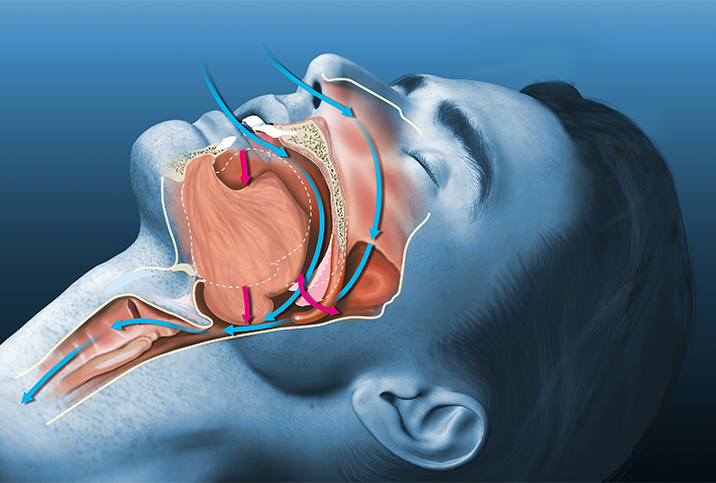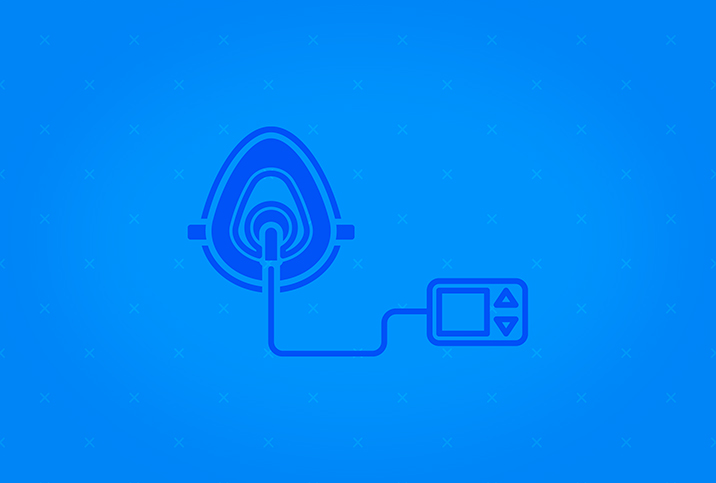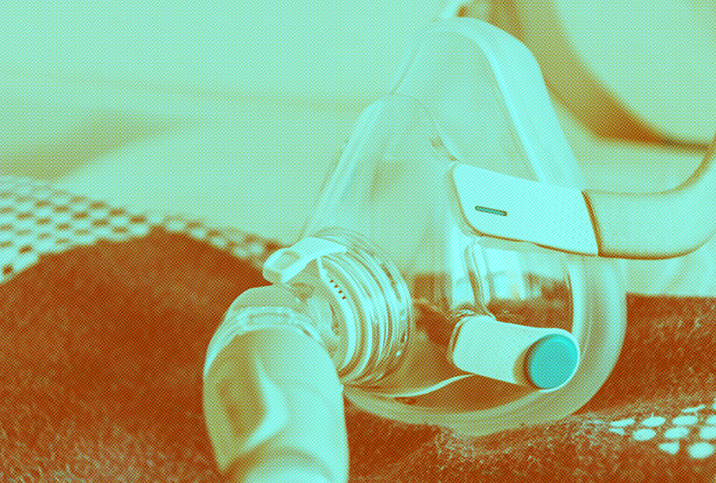The Latest Sleep Disorder Appliances

"Sleep debt—or the accumulation of missed hours of sleep—is out of control in today's society because we don't realize the value of a good night's sleep," said Abhinav Singh, M.D., facility director of Indiana Sleep Center. "Poor sleep impacts our economy. It's estimated that the U.S. economy loses $149.5 billion in annual revenue because of undiagnosed sleep apnea."
This statistic is staggering. Even more upsetting is how few people seek treatment for their sleep loss. Most of us know from day to day we don't get enough sleep. We might feel lethargic or just not feel "on." Unfortunately, continuing to live with an ever-growing sleep debt can cause complications such as heart issues and an increased risk of diabetes, and managing these conditions can be more difficult because of sleep apnea.
Why the most common treatment fails
The most common sleep disorder is the aforementioned sleep apnea. Typically, the first approach to addressing the issue is through the use of a continuous positive airway pressure (CPAP) machine. Unfortunately, this cumbersome device is time-consuming to set up and maintain. In addition to daily maintenance, the machine could disturb your partner, thus, stopping them from getting a good night's sleep.
"The worst part of using a CPAP is that most patients become claustrophobic when wearing the face mask," said Raj Dedhia, M.D., otorhinolaryngology (ear, nose and throat) and sleep specialist at Penn Medicine in Philadelphia. "To make matters worse, the claustrophobia prevents the patient from falling asleep, and when they do, they cannot sleep in their preferred position because of the tubes and CPAP apparatus."
This inconvenience results in many sleep apnea patients stopping their treatment, which discourages them from returning to their sleep specialist for alternate solutions. However, what they don't realize is a CPAP is only one of many devices that can effectively treat their sleep disorder.
Mouth closure devices
"Many patients in my office breathe through their mouths," Dedhia said. "This might not seem like a big deal, but this trait allows the tongue to slip into the airway in such a way that it causes a pressure change and leads to airway collapse [or sleep apnea]."
Dedhia explained that in these circumstances, patients find mouth tape or even a mouth closure device is enough to reposition the tongue and take pressure off the airway. However, he noted this is not the most common treatment he recommends for patients with mild or moderate sleep apnea. A patient's choice of sleep device is often about preference, so it's important to consider what's best for your stage of sleep apnea.
Mouth tape is exactly what it sounds like. This tape is a sticky fabric placed over the lips to hold your mouth closed. While many patients like this approach because they do not need to adjust to an apparatus in their mouth, other patients seek alternatives because their lips become irritated from the tape. There can be some mild pain when you remove the tape in the morning, and sometimes this approach can cause sleep disturbances if the tape falls off or pulls on your skin while you sleep.
Other mouth devices can include a variety of configurations. For example, some patients find greater success with a chin strap. This device comes in a few variations, but each fulfills the same purpose of keeping the mouth closed with a fabric strap that wraps around the chin and fastens on the head. Many patients prefer this option because it allows some give for jaw movement, and the strap is designed to let the wearer sleep in their natural position without feeling restrained by bulky equipment.
Repositioning the tongue and jaw
While mouth closure is often a concern, other patients find that their jaw or tongue positioning is to blame. When these alignment issues are of concern, more specific devices and procedures are considered.
Some are more invasive than others, and understanding the nuances of your sleep apnea is essential to determining its most effective treatment. For example, more severe sleep apnea stages may require jaw alignment surgery, which often involves breaking the jaw and physically repositioning it.
"Because sleep apnea has so many factors to rule out, we often bring patients into the sleep lab to try out their devices, so we can see their efficacy," Singh explained. "We may also have them remove the devices, so we can pinpoint where the obstruction is occurring."
'Because sleep apnea has so many factors to rule out, we often bring patients into the sleep lab to try out their devices, so we can see their efficacy.'
Moderate sleep apnea encompasses more serious obstructions, and on the more severe end of the spectrum, patients may need surgery to correct their problem. While this might not be ideal for many patients because of recovery time, both Dedhia and Singh confirmed that these surgical interventions may be the best choice because once the procedure is completed, the sleep apnea is often permanently corrected.
Many patients find success with an oral device that helps hold the tongue in place.
"Sometimes the configuration of the patient's mouth is the problem," Singh said. "The most common issue occurs when the tongue is set further back in the mouth, it's too large for the mouth or it simply falls back, which obstructs the airway."
Tongue-stabilizing devices can be effective in these situations because they apply pressure to the tongue to hold it in place, which prevents obstruction to the airway. The devices are usually variations of a mouthpiece similar to a mouth guard for high-impact sports.
If you believe you may be suffering from sleep apnea, both experts emphasized the availability of other options besides the traditional CPAP unit. The first step is to get the help of a sleep specialist who can accurately diagnose and treat your sleep disorder. There are many treatment options and devices, and you should have confidence there will be a solution that works for you.


















